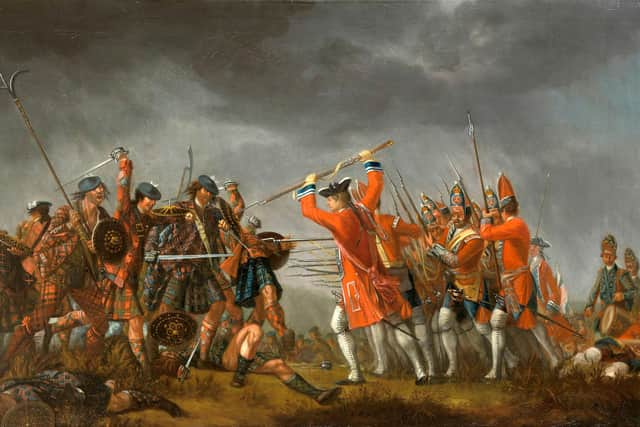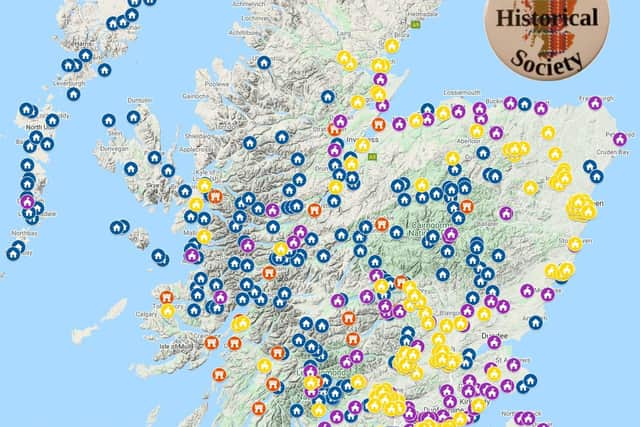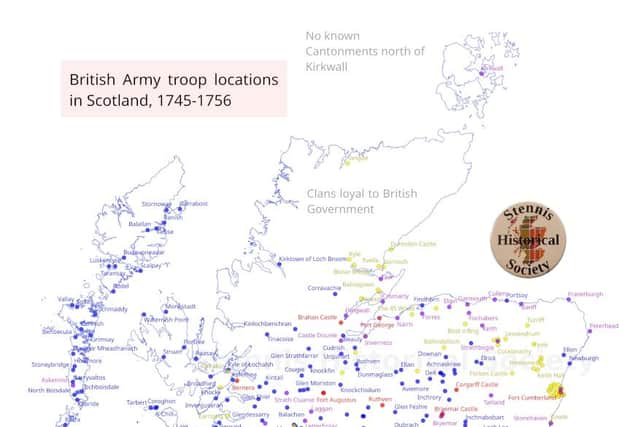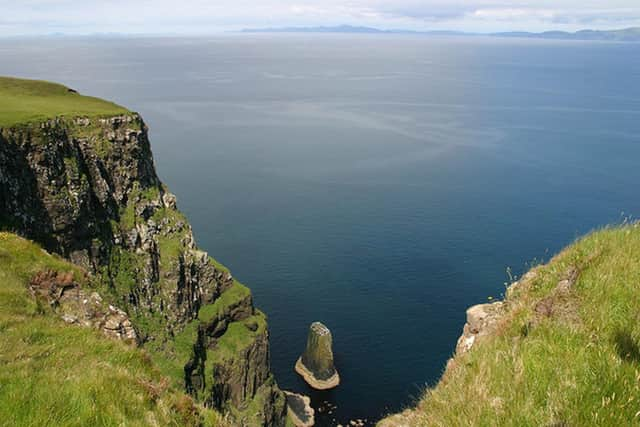The lost plan for forts and barracks through the Hebrides in the wake of Culloden
Letters from a British Army captain stationed in the Western Isles in 1754, some eight years after the last Jacobite rising ended in defeat, show recommendations for a heightened military presence in the islands.
The letters have emerged following research by the Stennis Historical Society, which has now identified at least 550 military cantonments – from barracks to garrisons, camps and posts – from Lerwick to Gretna in the ten years that followed Culloden.
Advertisement
Hide AdAdvertisement
Hide AdIn August 1754, Captain John Barlow, who was stationed in the Western Isles with around 150 men, wrote of an unsuccessful fortnight-long search of Barra and Sout Uist for a priest who travelled from Arisaig to perform a public mass.


Captain Barlow wrote: “I shall try all possible schemes to root entirely out those noctious (sic) and poisonous weeds who are pests to society and enemies of our happy constitution.”
He went on to describe most of the residents of Glengarry, Knoidart, Moidart, South Uist and Barra as “papists, slavishly subjected to their priests, who are plotting among them, and blindly attached to the Pretender and his interests without any proper magistrate to ... keep them in subjection”.
Captain Barlow later recommended that barracks should be built in South Uist with a fort also proposed for the remains of Ormacleit Castle, which was reportedly destroyed by fire on the day Alan Macdonald, chief of Clanranald, was killed at the Battle of Sheriffmuir in November 17.


He also recommended for a new fort to be built on an island off Stornoway harbour, with the Isle of Canna described as an “extremely necessary” location for such a stronghold.
Captain Barlow said: "There is an excellent harbour which is frequented by shipping from all the neighbouring nations. Another advantage would arise in that no ships could pass without being discovered, nor no boat could cross from any of the Long Islands to Knoidart, Moidart and Arisaig.”
Captain Barlow’s papers, which are held by National Library of Scotland, show army posts of six to 12 men dotted from Garrabost in the north east of Lewis right down to the isle of Vatersay.
Islanders on South Uist were described as being as “under some apprehension and wanted to know what brought us there in time of peace”.


Advertisement
Hide AdAdvertisement
Hide AdCaptain Barlow added: “We told them we wanted arms, but they said they had none, nor indeed did we find any or any other person in Highland dress.”
On North Uist, Captain Barlow found islanders as “very civil” with the people “all presbyterians and very well affected to his Majesty King George and his family.”
Mr Kennedy said: “People thought everything was finished after Culloden, but the authorities seemed to have a different view in mind.
“I think the scale and extent of the occupation of Scotland, which is what I would term it, an occupation, for more than a decade hasn’t really been drawn attention to.


"Everyone knows about Culloden, but this is the history that followed. As far as I know, no one has done an in-depth record of troop locations at this time in Scotland. The research is unique.”
A message from the Editor:Thank you for reading this article. We're more reliant on your support than ever as the shift in consumer habits brought about by Coronavirus impacts our advertisers.
If you haven't already, please consider supporting our trusted, fact-checked journalism by taking out a digital subscription.
Comments
Want to join the conversation? Please or to comment on this article.